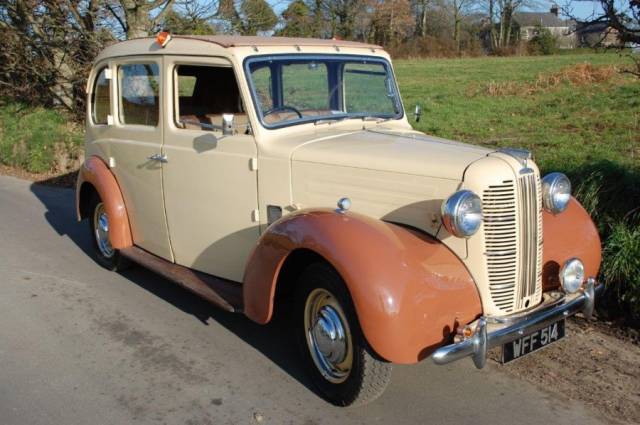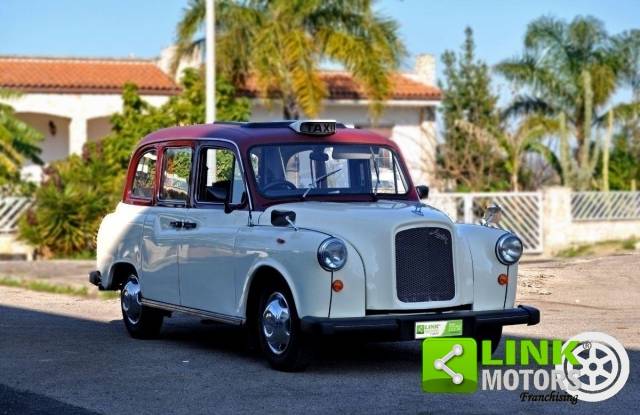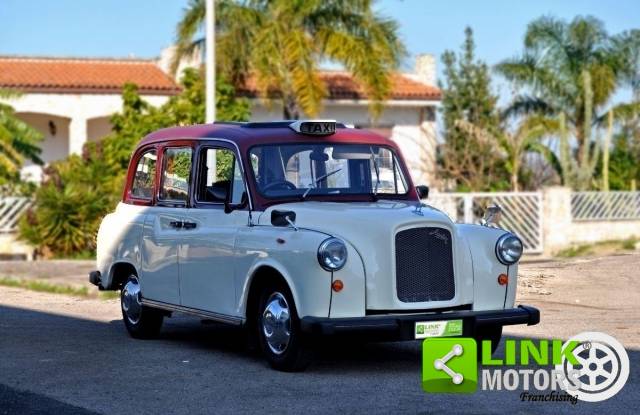Austin FX 3 Classic Cars for Sale
The Austin FX3 dominated Britain’s post-war taxi scene, defining the streetscape of London from 1948 to 1958. With its unmistakable silhouette, purposeful engineering, and specific adaptation for city taxi duty, the FX3 remains one of the most recognised vehicles among classic British cars.
Search results

1955 | Austin FX 3 London Taxi
Austin FL1 Shooting Brake conversion
Austin FX 3 listing references from Classic Trader
Below you will find listings related to your search that are no longer available on Classic Trader. Use this information to gain insight into availability, value trends, and current pricing for a "Austin FX 3" to make a more informed purchasing decision.

1957 | Austin FX 3 London Taxi
1957 Austin FX3 Taxi

1957 | Austin FX 3 London Taxi
1957 Austin FX3 Taxi

1993 | Austin FX 3 London Taxi
AUSTIN ROVER FX3 HIDECAR TAXI INGLESE PERFETTAMENTE RESTAURATO

1993 | Austin FX 3 London Taxi
AUSTIN ROVER FX3 TAXI INGLESE PERFETTAMENTE RESTAURATO
The Austin FX3: A Chapter in British Motoring History
Introduced in 1948, the Austin FX3 succeeded the longstanding FX2 as Austin’s answer to the post-war taxi market. Purpose-built for urban transportation, mainly in London but also exported to other large British cities, over 7,000 units of the FX3 were produced. Without a front passenger door, the design prioritised luggage space beside the driver and accessibility for tools—a distinctive tweak compared to many cabs of its era. The FX3 quickly became emblematic of the London cityscape, consistently associated with the image of the classic British taxi.
Model History: From FX2 to FX3 and Beyond
The FX3 replaced the Austin FX2, which had served from 1921 to 1947, bridging generations in public transport utility. Its production continued until 1958, at which point the FX4 arrived, ushering in a new era for the London cab. Over the FX3's decade of production, design and mechanical updates were made, though its core layout remained consistent: practical, robust, and instantly recognisable.
Highlights and Unique Features of the Austin FX3
The FX3 stood out for several details tailored specifically to the needs of urban taxi operators: an absence of a passenger-side front door for flexible luggage storage, a robust body produced by Carbodies, and a high-utility tool compartment built in under the luggage area. The vehicle’s silhouette, frequently finished in black, embodied the British capital’s taxi culture—and saw use in film and advertising long after production ceased.
Technical Specifications
Special Editions and Notable Variants
A small batch of FX3 vehicles was equipped with prototype automatic transmissions between 1957 and 1958. These trial models are rare due to limited production and the lack of market acceptance, offering a point of interest for collectors and specialists looking for unusual configurations within the FX3 lineage.
Weak Spots and Common Issues
There are no known issues or typical weak spots reported specifically for the Austin FX3 in Classic Trader's current records. Nonetheless, as with any utilitarian vehicle of its era, prospective buyers should inspect chassis integrity, suspension components, and the condition of the drivetrain, as heavy-duty city use was standard for these vehicles.
Engine, Performance, Gearbox, and Driving
The Austin FX3 was engineered for the stop-start demands of urban taxi work. The 2.2-litre engines (both petrol and later diesel) delivered reliable, manageable power, favouring torque over outright speed. The design emphasised durability and low-speed driveability, with the vehicle’s substantial weight and rugged suspension well-suited for long hours in city traffic. The attempted automatic transmissions never entered series production, but illustrate efforts to modernise taxi operation in the late 1950s. 1. FX3 Diesel (Late Years) – The diesel-engined versions are favoured by collectors due to better fuel economy, greater originality among surviving examples, and their role in the FX3’s later production. 2. Experimental Automatic FX3 (1957–1958) – Rarely found on the market, these test units hold curiosity value for their historical significance and technical deviation.
Interior, Comfort, Exterior, and Design
The FX3’s appearance, shaped by Carbodies’ taxi expertise, was focused on utility: easy rear access, accommodation for luggage beside the driver, and a durable, upright body ideal for visibility and manoeuvrability in city streets. Most FX3s left the factory in black, reinforcing their link to the London taxi tradition. The interior was sparse but robust, with surfaces designed to withstand years of intensive use. Bespoke features included the distinct lack of a passenger-side front door, a detail almost exclusive to London taxis of the period. Accessories and materials prioritised hardwearing function over luxury, perfectly suited to the car’s daily professional role.
Other Interesting Facts
The FX3 holds a place not just in commercial history but in British cinema and popular culture. Its presence in productions like Gerald Thomas’s ‘Ist ja Irre – diese müden Taxifahrer’ contributed to its enduring fame. Surviving FX3s have been exported globally, particularly to the USA, where they have found new lives as collectibles, business promotions, or showpieces.
Summary
The Austin FX3 occupies a distinct niche in British automotive heritage, its silhouette immediately evocative of mid-20th-century London. Robust engineering, taxi-specific design touches, and an unmistakable appearance have guaranteed its status as a central figure in the history of urban transport. Strong supply and focused demand figures corroborate its reputation as the quintessential British taxi for classic car aficionados.
